Enteral Feeding Pumps
Enteral Feed Bags
Enteral Feeding Tubes
Accessories
Oncology
Gastroenterology
Neurological Disorders
Critical Care
Hospitals
Home Care Settings
Nursing Facilities
Ambulatory Surgical Centers
Plastic
Polymer
Silicone
North America
Europe
South America
Asia Pacific
Middle East and Africa
North America Outlook (USD Billion, 2019-2035)
North America Enteral Feeding Devices Market by Device Type
Enteral Feeding Pumps
Enteral Feed Bags
Enteral Feeding Tubes
Accessories
North America Enteral Feeding Devices Market by Application Type
Oncology
Gastroenterology
Neurological Disorders
Critical Care
North America Enteral Feeding Devices Market by End User Type
Hospitals
Home Care Settings
Nursing Facilities
Ambulatory Surgical Centers
North America Enteral Feeding Devices Market by Material Type
Plastic
Polymer
Silicone
North America Enteral Feeding Devices Market by Regional Type
US
Canada
US Outlook (USD Billion, 2019-2035)
US Enteral Feeding Devices Market by Device Type
Enteral Feeding Pumps
Enteral Feed Bags
Enteral Feeding Tubes
Accessories
US Enteral Feeding Devices Market by Application Type
Oncology
Gastroenterology
Neurological Disorders
Critical Care
US Enteral Feeding Devices Market by End User Type
Hospitals
Home Care Settings
Nursing Facilities
Ambulatory Surgical Centers
US Enteral Feeding Devices Market by Material Type
Plastic
Polymer
Silicone
CANADA Outlook (USD Billion, 2019-2035)
CANADA Enteral Feeding Devices Market by Device Type
Enteral Feeding Pumps
Enteral Feed Bags
Enteral Feeding Tubes
Accessories
CANADA Enteral Feeding Devices Market by Application Type
Oncology
Gastroenterology
Neurological Disorders
Critical Care
CANADA Enteral Feeding Devices Market by End User Type
Hospitals
Home Care Settings
Nursing Facilities
Ambulatory Surgical Centers
CANADA Enteral Feeding Devices Market by Material Type
Plastic
Polymer
Silicone
Europe Outlook (USD Billion, 2019-2035)
Europe Enteral Feeding Devices Market by Device Type
Enteral Feeding Pumps
Enteral Feed Bags
Enteral Feeding Tubes
Accessories
Europe Enteral Feeding Devices Market by Application Type
Oncology
Gastroenterology
Neurological Disorders
Critical Care
Europe Enteral Feeding Devices Market by End User Type
Hospitals
Home Care Settings
Nursing Facilities
Ambulatory Surgical Centers
Europe Enteral Feeding Devices Market by Material Type
Plastic
Polymer
Silicone
Europe Enteral Feeding Devices Market by Regional Type
Germany
UK
France
Russia
Italy
Spain
Rest of Europe
GERMANY Outlook (USD Billion, 2019-2035)
GERMANY Enteral Feeding Devices Market by Device Type
Enteral Feeding Pumps
Enteral Feed Bags
Enteral Feeding Tubes
Accessories
GERMANY Enteral Feeding Devices Market by Application Type
Oncology
Gastroenterology
Neurological Disorders
Critical Care
GERMANY Enteral Feeding Devices Market by End User Type
Hospitals
Home Care Settings
Nursing Facilities
Ambulatory Surgical Centers
GERMANY Enteral Feeding Devices Market by Material Type
Plastic
Polymer
Silicone
UK Outlook (USD Billion, 2019-2035)
UK Enteral Feeding Devices Market by Device Type
Enteral Feeding Pumps
Enteral Feed Bags
Enteral Feeding Tubes
Accessories
UK Enteral Feeding Devices Market by Application Type
Oncology
Gastroenterology
Neurological Disorders
Critical Care
UK Enteral Feeding Devices Market by End User Type
Hospitals
Home Care Settings
Nursing Facilities
Ambulatory Surgical Centers
UK Enteral Feeding Devices Market by Material Type
Plastic
Polymer
Silicone
FRANCE Outlook (USD Billion, 2019-2035)
FRANCE Enteral Feeding Devices Market by Device Type
Enteral Feeding Pumps
Enteral Feed Bags
Enteral Feeding Tubes
Accessories
FRANCE Enteral Feeding Devices Market by Application Type
Oncology
Gastroenterology
Neurological Disorders
Critical Care
FRANCE Enteral Feeding Devices Market by End User Type
Hospitals
Home Care Settings
Nursing Facilities
Ambulatory Surgical Centers
FRANCE Enteral Feeding Devices Market by Material Type
Plastic
Polymer
Silicone
RUSSIA Outlook (USD Billion, 2019-2035)
RUSSIA Enteral Feeding Devices Market by Device Type
Enteral Feeding Pumps
Enteral Feed Bags
Enteral Feeding Tubes
Accessories
RUSSIA Enteral Feeding Devices Market by Application Type
Oncology
Gastroenterology
Neurological Disorders
Critical Care
RUSSIA Enteral Feeding Devices Market by End User Type
Hospitals
Home Care Settings
Nursing Facilities
Ambulatory Surgical Centers
RUSSIA Enteral Feeding Devices Market by Material Type
Plastic
Polymer
Silicone
ITALY Outlook (USD Billion, 2019-2035)
ITALY Enteral Feeding Devices Market by Device Type
Enteral Feeding Pumps
Enteral Feed Bags
Enteral Feeding Tubes
Accessories
ITALY Enteral Feeding Devices Market by Application Type
Oncology
Gastroenterology
Neurological Disorders
Critical Care
ITALY Enteral Feeding Devices Market by End User Type
Hospitals
Home Care Settings
Nursing Facilities
Ambulatory Surgical Centers
ITALY Enteral Feeding Devices Market by Material Type
Plastic
Polymer
Silicone
SPAIN Outlook (USD Billion, 2019-2035)
SPAIN Enteral Feeding Devices Market by Device Type
Enteral Feeding Pumps
Enteral Feed Bags
Enteral Feeding Tubes
Accessories
SPAIN Enteral Feeding Devices Market by Application Type
Oncology
Gastroenterology
Neurological Disorders
Critical Care
SPAIN Enteral Feeding Devices Market by End User Type
Hospitals
Home Care Settings
Nursing Facilities
Ambulatory Surgical Centers
SPAIN Enteral Feeding Devices Market by Material Type
Plastic
Polymer
Silicone
REST OF EUROPE Outlook (USD Billion, 2019-2035)
REST OF EUROPE Enteral Feeding Devices Market by Device Type
Enteral Feeding Pumps
Enteral Feed Bags
Enteral Feeding Tubes
Accessories
REST OF EUROPE Enteral Feeding Devices Market by Application Type
Oncology
Gastroenterology
Neurological Disorders
Critical Care
REST OF EUROPE Enteral Feeding Devices Market by End User Type
Hospitals
Home Care Settings
Nursing Facilities
Ambulatory Surgical Centers
REST OF EUROPE Enteral Feeding Devices Market by Material Type
Plastic
Polymer
Silicone
APAC Outlook (USD Billion, 2019-2035)
APAC Enteral Feeding Devices Market by Device Type
Enteral Feeding Pumps
Enteral Feed Bags
Enteral Feeding Tubes
Accessories
APAC Enteral Feeding Devices Market by Application Type
Oncology
Gastroenterology
Neurological Disorders
Critical Care
APAC Enteral Feeding Devices Market by End User Type
Hospitals
Home Care Settings
Nursing Facilities
Ambulatory Surgical Centers
APAC Enteral Feeding Devices Market by Material Type
Plastic
Polymer
Silicone
APAC Enteral Feeding Devices Market by Regional Type
China
India
Japan
South Korea
Malaysia
Thailand
Indonesia
Rest of APAC
CHINA Outlook (USD Billion, 2019-2035)
CHINA Enteral Feeding Devices Market by Device Type
Enteral Feeding Pumps
Enteral Feed Bags
Enteral Feeding Tubes
Accessories
CHINA Enteral Feeding Devices Market by Application Type
Oncology
Gastroenterology
Neurological Disorders
Critical Care
CHINA Enteral Feeding Devices Market by End User Type
Hospitals
Home Care Settings
Nursing Facilities
Ambulatory Surgical Centers
CHINA Enteral Feeding Devices Market by Material Type
Plastic
Polymer
Silicone
INDIA Outlook (USD Billion, 2019-2035)
INDIA Enteral Feeding Devices Market by Device Type
Enteral Feeding Pumps
Enteral Feed Bags
Enteral Feeding Tubes
Accessories
INDIA Enteral Feeding Devices Market by Application Type
Oncology
Gastroenterology
Neurological Disorders
Critical Care
INDIA Enteral Feeding Devices Market by End User Type
Hospitals
Home Care Settings
Nursing Facilities
Ambulatory Surgical Centers
INDIA Enteral Feeding Devices Market by Material Type
Plastic
Polymer
Silicone
JAPAN Outlook (USD Billion, 2019-2035)
JAPAN Enteral Feeding Devices Market by Device Type
Enteral Feeding Pumps
Enteral Feed Bags
Enteral Feeding Tubes
Accessories
JAPAN Enteral Feeding Devices Market by Application Type
Oncology
Gastroenterology
Neurological Disorders
Critical Care
JAPAN Enteral Feeding Devices Market by End User Type
Hospitals
Home Care Settings
Nursing Facilities
Ambulatory Surgical Centers
JAPAN Enteral Feeding Devices Market by Material Type
Plastic
Polymer
Silicone
SOUTH KOREA Outlook (USD Billion, 2019-2035)
SOUTH KOREA Enteral Feeding Devices Market by Device Type
Enteral Feeding Pumps
Enteral Feed Bags
Enteral Feeding Tubes
Accessories
SOUTH KOREA Enteral Feeding Devices Market by Application Type
Oncology
Gastroenterology
Neurological Disorders
Critical Care
SOUTH KOREA Enteral Feeding Devices Market by End User Type
Hospitals
Home Care Settings
Nursing Facilities
Ambulatory Surgical Centers
SOUTH KOREA Enteral Feeding Devices Market by Material Type
Plastic
Polymer
Silicone
MALAYSIA Outlook (USD Billion, 2019-2035)
MALAYSIA Enteral Feeding Devices Market by Device Type
Enteral Feeding Pumps
Enteral Feed Bags
Enteral Feeding Tubes
Accessories
MALAYSIA Enteral Feeding Devices Market by Application Type
Oncology
Gastroenterology
Neurological Disorders
Critical Care
MALAYSIA Enteral Feeding Devices Market by End User Type
Hospitals
Home Care Settings
Nursing Facilities
Ambulatory Surgical Centers
MALAYSIA Enteral Feeding Devices Market by Material Type
Plastic
Polymer
Silicone
THAILAND Outlook (USD Billion, 2019-2035)
THAILAND Enteral Feeding Devices Market by Device Type
Enteral Feeding Pumps
Enteral Feed Bags
Enteral Feeding Tubes
Accessories
THAILAND Enteral Feeding Devices Market by Application Type
Oncology
Gastroenterology
Neurological Disorders
Critical Care
THAILAND Enteral Feeding Devices Market by End User Type
Hospitals
Home Care Settings
Nursing Facilities
Ambulatory Surgical Centers
THAILAND Enteral Feeding Devices Market by Material Type
Plastic
Polymer
Silicone
INDONESIA Outlook (USD Billion, 2019-2035)
INDONESIA Enteral Feeding Devices Market by Device Type
Enteral Feeding Pumps
Enteral Feed Bags
Enteral Feeding Tubes
Accessories
INDONESIA Enteral Feeding Devices Market by Application Type
Oncology
Gastroenterology
Neurological Disorders
Critical Care
INDONESIA Enteral Feeding Devices Market by End User Type
Hospitals
Home Care Settings
Nursing Facilities
Ambulatory Surgical Centers
INDONESIA Enteral Feeding Devices Market by Material Type
Plastic
Polymer
Silicone
REST OF APAC Outlook (USD Billion, 2019-2035)
REST OF APAC Enteral Feeding Devices Market by Device Type
Enteral Feeding Pumps
Enteral Feed Bags
Enteral Feeding Tubes
Accessories
REST OF APAC Enteral Feeding Devices Market by Application Type
Oncology
Gastroenterology
Neurological Disorders
Critical Care
REST OF APAC Enteral Feeding Devices Market by End User Type
Hospitals
Home Care Settings
Nursing Facilities
Ambulatory Surgical Centers
REST OF APAC Enteral Feeding Devices Market by Material Type
Plastic
Polymer
Silicone
South America Outlook (USD Billion, 2019-2035)
South America Enteral Feeding Devices Market by Device Type
Enteral Feeding Pumps
Enteral Feed Bags
Enteral Feeding Tubes
Accessories
South America Enteral Feeding Devices Market by Application Type
Oncology
Gastroenterology
Neurological Disorders
Critical Care
South America Enteral Feeding Devices Market by End User Type
Hospitals
Home Care Settings
Nursing Facilities
Ambulatory Surgical Centers
South America Enteral Feeding Devices Market by Material Type
Plastic
Polymer
Silicone
South America Enteral Feeding Devices Market by Regional Type
Brazil
Mexico
Argentina
Rest of South America
BRAZIL Outlook (USD Billion, 2019-2035)
BRAZIL Enteral Feeding Devices Market by Device Type
Enteral Feeding Pumps
Enteral Feed Bags
Enteral Feeding Tubes
Accessories
BRAZIL Enteral Feeding Devices Market by Application Type
Oncology
Gastroenterology
Neurological Disorders
Critical Care
BRAZIL Enteral Feeding Devices Market by End User Type
Hospitals
Home Care Settings
Nursing Facilities
Ambulatory Surgical Centers
BRAZIL Enteral Feeding Devices Market by Material Type
Plastic
Polymer
Silicone
MEXICO Outlook (USD Billion, 2019-2035)
MEXICO Enteral Feeding Devices Market by Device Type
Enteral Feeding Pumps
Enteral Feed Bags
Enteral Feeding Tubes
Accessories
MEXICO Enteral Feeding Devices Market by Application Type
Oncology
Gastroenterology
Neurological Disorders
Critical Care
MEXICO Enteral Feeding Devices Market by End User Type
Hospitals
Home Care Settings
Nursing Facilities
Ambulatory Surgical Centers
MEXICO Enteral Feeding Devices Market by Material Type
Plastic
Polymer
Silicone
ARGENTINA Outlook (USD Billion, 2019-2035)
ARGENTINA Enteral Feeding Devices Market by Device Type
Enteral Feeding Pumps
Enteral Feed Bags
Enteral Feeding Tubes
Accessories
ARGENTINA Enteral Feeding Devices Market by Application Type
Oncology
Gastroenterology
Neurological Disorders
Critical Care
ARGENTINA Enteral Feeding Devices Market by End User Type
Hospitals
Home Care Settings
Nursing Facilities
Ambulatory Surgical Centers
ARGENTINA Enteral Feeding Devices Market by Material Type
Plastic
Polymer
Silicone
REST OF SOUTH AMERICA Outlook (USD Billion, 2019-2035)
REST OF SOUTH AMERICA Enteral Feeding Devices Market by Device Type
Enteral Feeding Pumps
Enteral Feed Bags
Enteral Feeding Tubes
Accessories
REST OF SOUTH AMERICA Enteral Feeding Devices Market by Application Type
Oncology
Gastroenterology
Neurological Disorders
Critical Care
REST OF SOUTH AMERICA Enteral Feeding Devices Market by End User Type
Hospitals
Home Care Settings
Nursing Facilities
Ambulatory Surgical Centers
REST OF SOUTH AMERICA Enteral Feeding Devices Market by Material Type
Plastic
Polymer
Silicone
MEA Outlook (USD Billion, 2019-2035)
MEA Enteral Feeding Devices Market by Device Type
Enteral Feeding Pumps
Enteral Feed Bags
Enteral Feeding Tubes
Accessories
MEA Enteral Feeding Devices Market by Application Type
Oncology
Gastroenterology
Neurological Disorders
Critical Care
MEA Enteral Feeding Devices Market by End User Type
Hospitals
Home Care Settings
Nursing Facilities
Ambulatory Surgical Centers
MEA Enteral Feeding Devices Market by Material Type
Plastic
Polymer
Silicone
MEA Enteral Feeding Devices Market by Regional Type
GCC Countries
South Africa
Rest of MEA
GCC COUNTRIES Outlook (USD Billion, 2019-2035)
GCC COUNTRIES Enteral Feeding Devices Market by Device Type
Enteral Feeding Pumps
Enteral Feed Bags
Enteral Feeding Tubes
Accessories
GCC COUNTRIES Enteral Feeding Devices Market by Application Type
Oncology
Gastroenterology
Neurological Disorders
Critical Care
GCC COUNTRIES Enteral Feeding Devices Market by End User Type
Hospitals
Home Care Settings
Nursing Facilities
Ambulatory Surgical Centers
GCC COUNTRIES Enteral Feeding Devices Market by Material Type
Plastic
Polymer
Silicone
SOUTH AFRICA Outlook (USD Billion, 2019-2035)
SOUTH AFRICA Enteral Feeding Devices Market by Device Type
Enteral Feeding Pumps
Enteral Feed Bags
Enteral Feeding Tubes
Accessories
SOUTH AFRICA Enteral Feeding Devices Market by Application Type
Oncology
Gastroenterology
Neurological Disorders
Critical Care
SOUTH AFRICA Enteral Feeding Devices Market by End User Type
Hospitals
Home Care Settings
Nursing Facilities
Ambulatory Surgical Centers
SOUTH AFRICA Enteral Feeding Devices Market by Material Type
Plastic
Polymer
Silicone
REST OF MEA Outlook (USD Billion, 2019-2035)
REST OF MEA Enteral Feeding Devices Market by Device Type
Enteral Feeding Pumps
Enteral Feed Bags
Enteral Feeding Tubes
Accessories
REST OF MEA Enteral Feeding Devices Market by Application Type
Oncology
Gastroenterology
Neurological Disorders
Critical Care
REST OF MEA Enteral Feeding Devices Market by End User Type
Hospitals
Home Care Settings
Nursing Facilities
Ambulatory Surgical Centers
REST OF MEA Enteral Feeding Devices Market by Material Type
Plastic
Polymer
Silicone

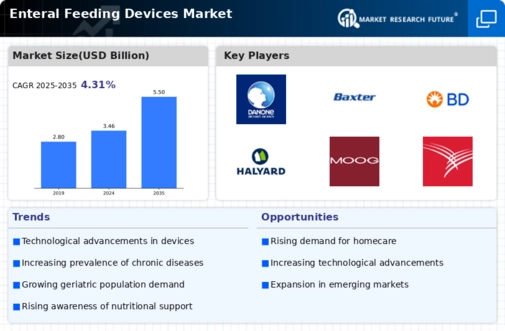
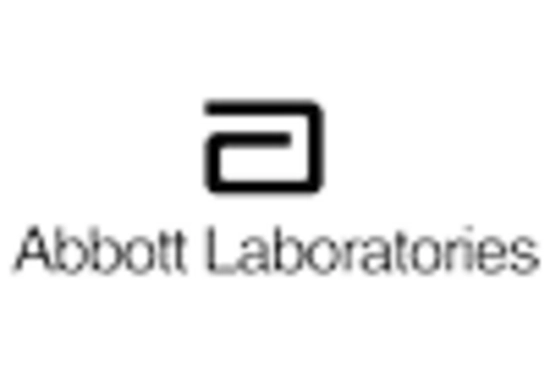
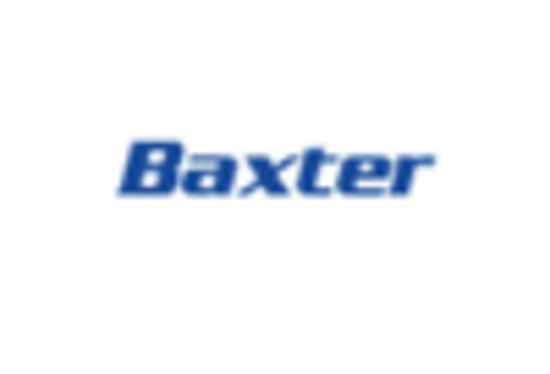

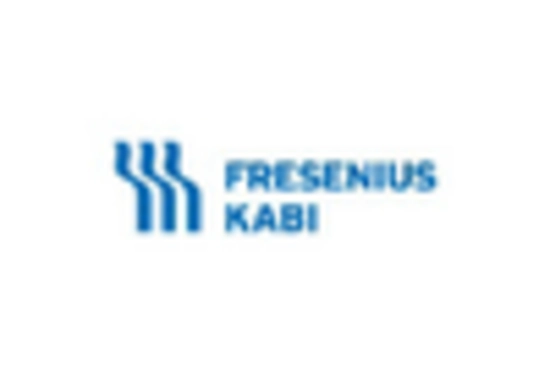
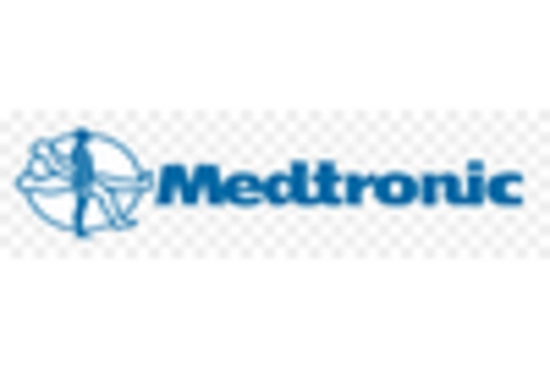
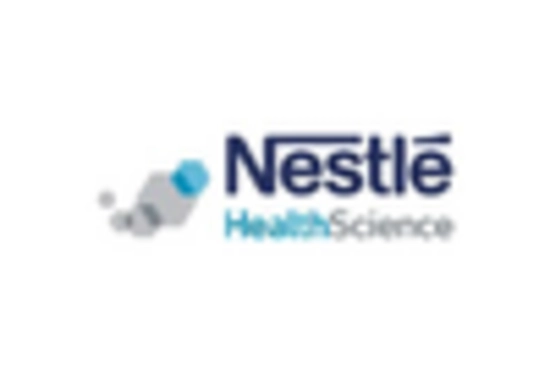

Leave a Comment